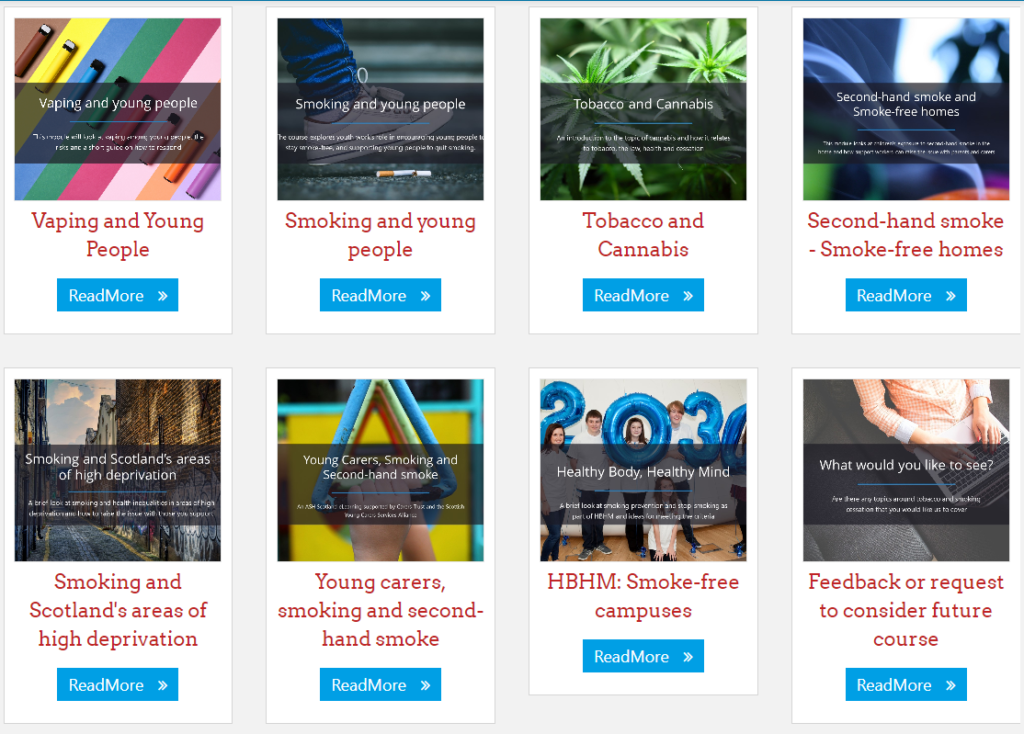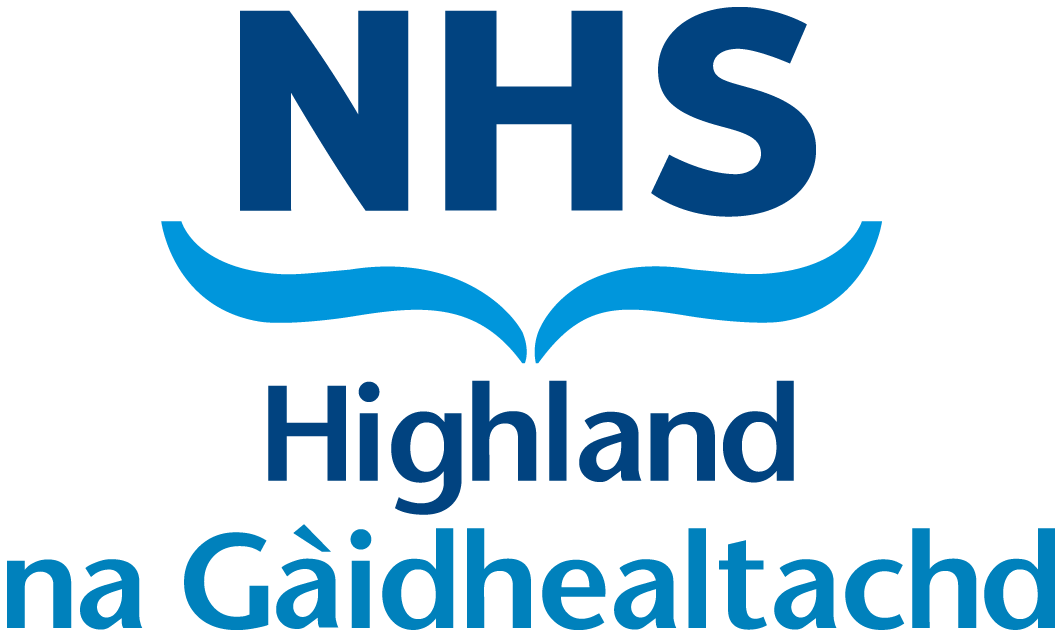On average, 36 children under 16 in Scotland start smoking every day. Children and young people might be drawn to smoking for any number of reasons; to act older, feel independent, or because smoking is seen as their ‘norm’.
NHS Highland together with its partners work to encourage children and young people to choose not to smoke. Smoking rates for 13 and 15 year olds in Scotland are now at the lowest since reporting began in 1982. The smoking rates for the Highland Health Board area are similar to the national average and whilst we welcome this progress, there is still much to be done.
It is important that influential adults avoid saying and doing things that might lead to smoking being seen as the norm or desirable. All adults who smoke can consider the impact of modelling smoking on children and young people in this helpful briefing paper.
A range of smoking prevention activities have been delivered across NHS Highland:
Reducing the availability of tobacco products
Young people can only smoke if they are able to buy or otherwise get hold of cigarettes. Therefore, measures to protect young people from the impact of tobacco, through legislation and other forms of regulation/control are a vital part of the solution.
It is for this reason that the NHS Highland Health Improvement Team work with the Highland Council’s Trading Standards to support the restriction of sales of tobacco and e-cigarettes, which cannot be sold to persons under the age of 18. This has included forwarding intelligence received regarding under-age sales activity to Trading Standards and encouraging recruitment of suitable, under-age volunteers for tobacco test purchasing exercises.
We have also worked together on the #notafavour campaign (more info below), and co-created the Tobacco and the Law fact sheet, which is available on the Highland Substance Awareness Toolkit (H-SAT) website:

Smoke-Free Sport
Smoke-Free Sport is an NHS Highland initiative and part of our overall aspiration for a smoke-free future. This is not about banning tobacco in Highland or unfairly stigmatising those who wish to smoke. Our focus is on doing all we can to encourage children and young people to choose not to smoke.
We know that the younger someone starts to smoke, the more likely they will continue smoking into adulthood, the heavier they are likely to smoke during adulthood and the more likely they are to fall ill as a result of smoking.
Smoke-Free Sport is about promoting health, creating environments to help young people from starting to smoke and giving everyone a chance to perform at their best.
Inverness Soccer Sevens, Street League and Youth League have signed up to Smoke-Free Sport which means they now have a Smoke-Free Policy. The policy clearly states that players, coaches and spectators do not smoke while taking part in the activities of their team or representing the team. A smoke-free policy is not a personal attack on smokers. The issue is not whether people can smoke, but when and where they can smoke.
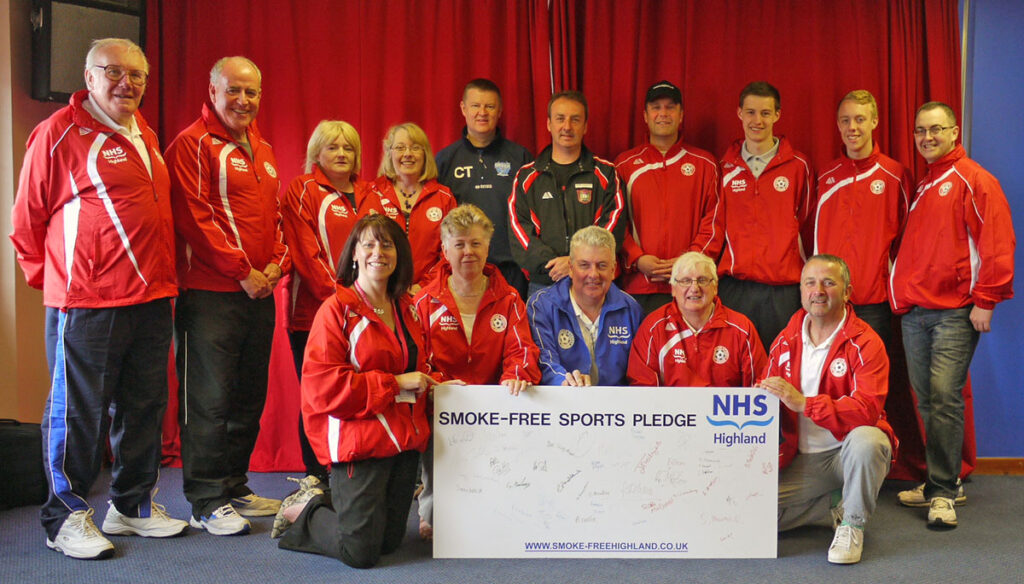
It is an offence for under 18s to buy tobacco products and also for an adult to buy tobacco products for an under 18. This Tobacco and the Law fact sheet includes further details.
Join Smoke-Free Sport
Are you a group or club that is involved in sport for young people?
Join us and encourage your young people to stay smoke-free in sport and in all aspects of their life, giving the information to make the best health choices at an early age.
Benefits:
- Preventing young people from starting to smoke
- Giving everyone a chance to perform their best
- Creating a smoke-free culture
- Supporting people who are already trying to quit
- Protecting children from second-hand smoke
- Protecting the environment
Lots of teams have signed up to Smoke-Free Sport since the launch in 2013, benefitting hundreds of young people involved in sport from primary and secondary school .
Signing up is a great way to demonstrate your care for the health and wellbeing of children and young people.
If you want to be part of the initiative, please contact us using the following form:
Smoke-free homes
Keeping a smoke-free home and car not only protects from the effects of second hand smoke, but also prevents young people from starting to smoke.
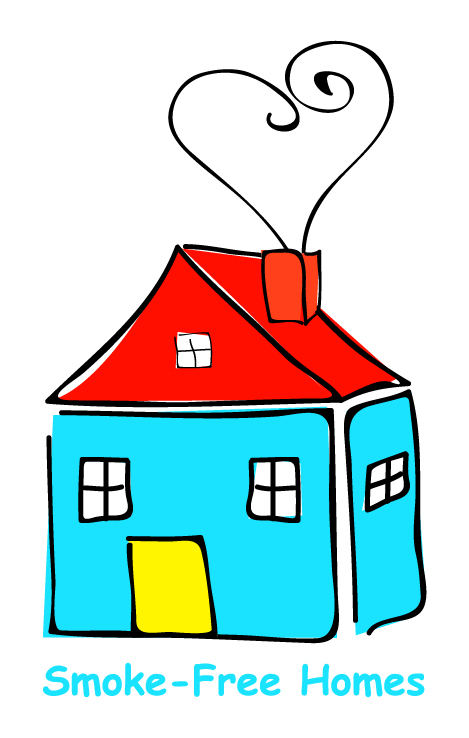
The NHS Highland Smoke-Free Homes and Cars Challenge began in May 2010, we have had over 1400 homes sign up and over 170 requests for free Home Fire Safety Visits. We continue to focus our efforts with children and young people living in households in disadvantaged areas and welcome measures outlined in the Scottish Government’s Tobacco Control strategy and action plan, which include:
- Continued reporting of low levels of exposure to second hand smoke (especially among young people and children)
- Extending smoking restrictions to communal stairwells and landings
For more information about the smoke free homes and cars challenge, visit the Homes page on this website.
Sign up to the Smoke-Free Home Challenge
On completion of this form you will receive a Smoke-Free Homes Information Guide and Certificate.
What can parents and carers do?
Can adults help children decide to be smoke-free?
While there is no one way to prevent all children from starting smoking, the good news is that parents, carers and other adults that play an important role in children and young people’s lives can encourage positive, informed choices about smoking. Children whose parents speak with them about smoking are much less likely to start. That’s especially true if a parent smokes.
Why should adults talk to children about smoking?
Each year, tobacco use is associated with over 10,000 deaths and 128,000 hospital admissions in Scotland. Most adult smokers begin smoking as children, and want to quit. We know that the younger an individual starts to smoke, the more likely they are to be an adult smoker, the heavier they are likely to smoke during adulthood and the more likely they are to fall ill as a result of smoking. Young people don’t often realise how quickly a person can become dependent on nicotine. Talking with them can help them gain confidence in their ability to make healthy, independent choices.
Our Alcohol, Tobacco and Other Drugs: A Parent’s Guide can help to have these conversations.
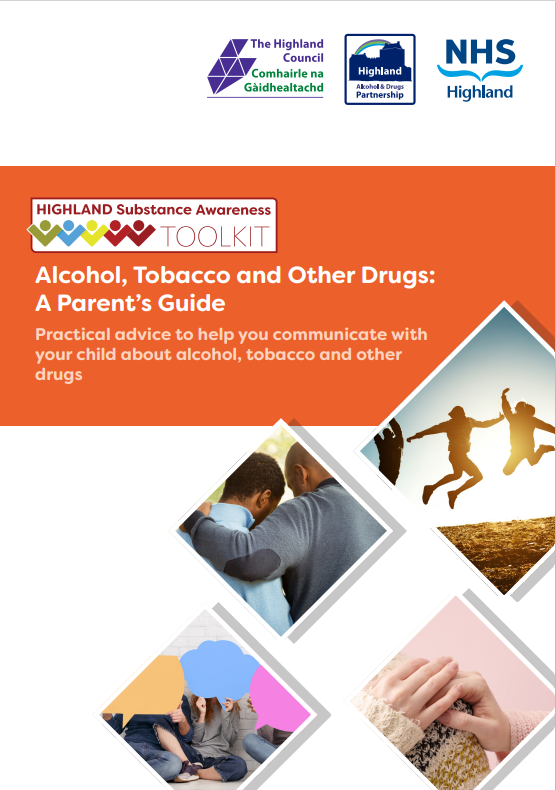
What can adults do to prevent children and young people from smoking?
- Keep your home smoke-free; children whose parents have made their home and car completely smoke-free are far less likely to start smoking themselves.
- Start a conversation; an item on the evening news, a film where a character lights up, a family friend who quit, are all great opportunities to start a conversation. Start talking to children about smoking when they are five or six years old and continue through their secondary school years. Many children start smoking at age 11 and some are dependent on nicotine by age 12. Try to keep the conversation relaxed by talking when you are side by side rather than face to face. Or by using open-ended questions to help turn a conversation into a discussion rather than a lecture. e.g. “What would you say if one of your friends started smoking?”
- Discuss the downside of smoking; often children aren’t able to appreciate how their current behaviour will affect their future health. So talk about the immediate downsides to smoking: less money to spend, bad breath, yellow teeth, smelly hair etc. If your child is physically active and into sports, you could talk about the shortness of breath and the loss of endurance that tobacco causes. If you smoke yourself and regret starting, try explaining what it is about smoking that you don’t like.
- Correct the myth that most young people smoke; many children try smoking because they think everyone else is doing it but the truth is the majority of people (both young and old) do not smoke. It’s important to help them understand this. Try saying, “I read that most young people in Scotland don’t smoke. What do you think?”
- Explain how hard it can be to quit; the longer that someone has been smoking, the more difficult they will find it to quit. The nicotine in cigarettes is an extremely addictive drug. Once it enters the body it makes the body want more of it. Sometimes young people try smoking, just to see what it’s like, but then find it difficult to stop.
- Help children and young people practice resistance skills; the more often a child thinks (and plans) about how they would refuse a cigarette, the more likely they are not to smoke in the long term. Try asking questions such as “what could you say if someone offered you a cigarette and you didn’t want one?” Then get them to write down their response to different situations e.g. if offered a cigarette whilst out with a friend I will say “No thanks, I don’t smoke.” Repeat this exercise regularly.
- Help children to complete school-based homework assignments; all schools should deliver tobacco prevention activities as part of the curriculum. Sometimes a child will be asked to complete prevention activity at home, and this can be a great opportunity to start a conversation.
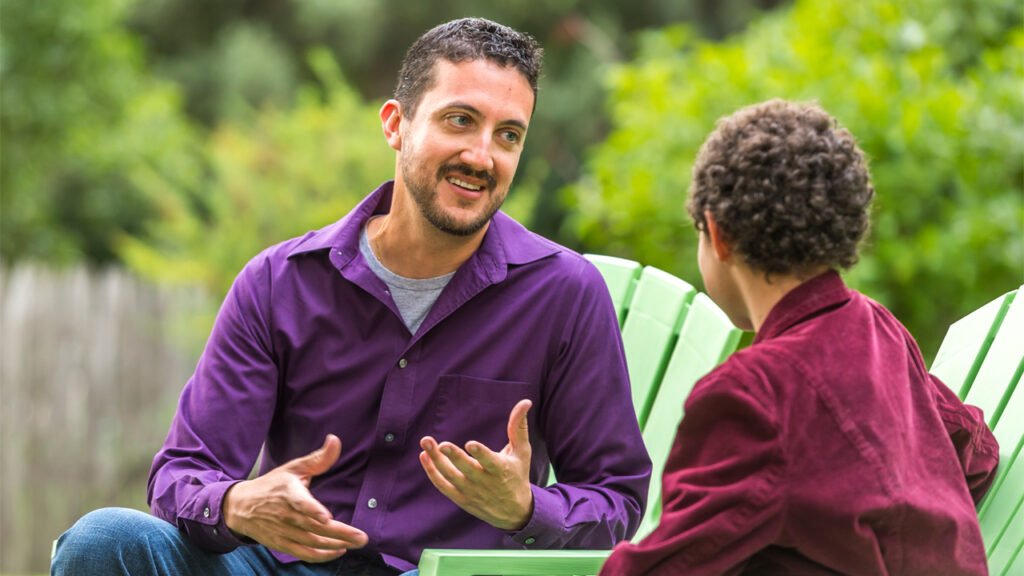
What if my child vapes?
Feel free to read through Vaping Information for Parents and Carers, produced as part of the Planet Youth project by NHS Highland in October 2024.
Planet Youth applies protective and preventative strategies based on an Icelandic model tackling substance misuse. Hundreds of children are involved in the project across Highland.
Remember it is against the law to purchase vapes on behalf of under 18s.
Vapes are not for children and young people – the only use for vapes is as a stop smoking aid.
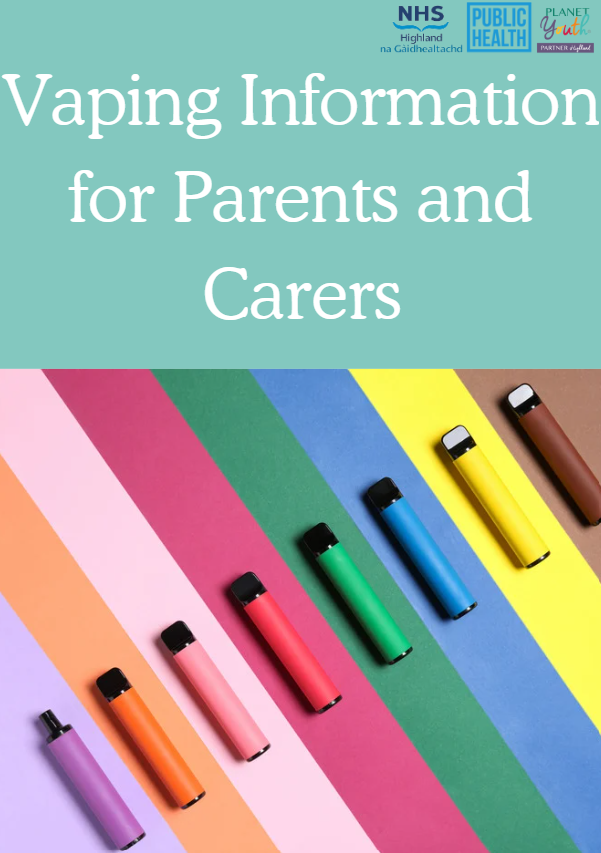
Schools
The vast majority of primary school pupils do not smoke, making it the ideal time to introduce the issues and to encourage children to consider the benefits of remaining smoke-free in their lives.
We know that smoking rates among school children increases with age. In light of this, prevention efforts would be most effective if they began in primary school and continued throughout the school career. Curriculum for Excellence provides a real opportunity for young people to develop the skills for life in a way which enhances their ability to make positive choices about their health and wellbeing; including choosing to be smoke free.
The Highland Smoke-free team can come into schools and provide awareness workshops for pupils or parents and carers on:
- Smoking
- Vaping
- Other nicotine-based products such as pouches
Please contact us if you are interested.
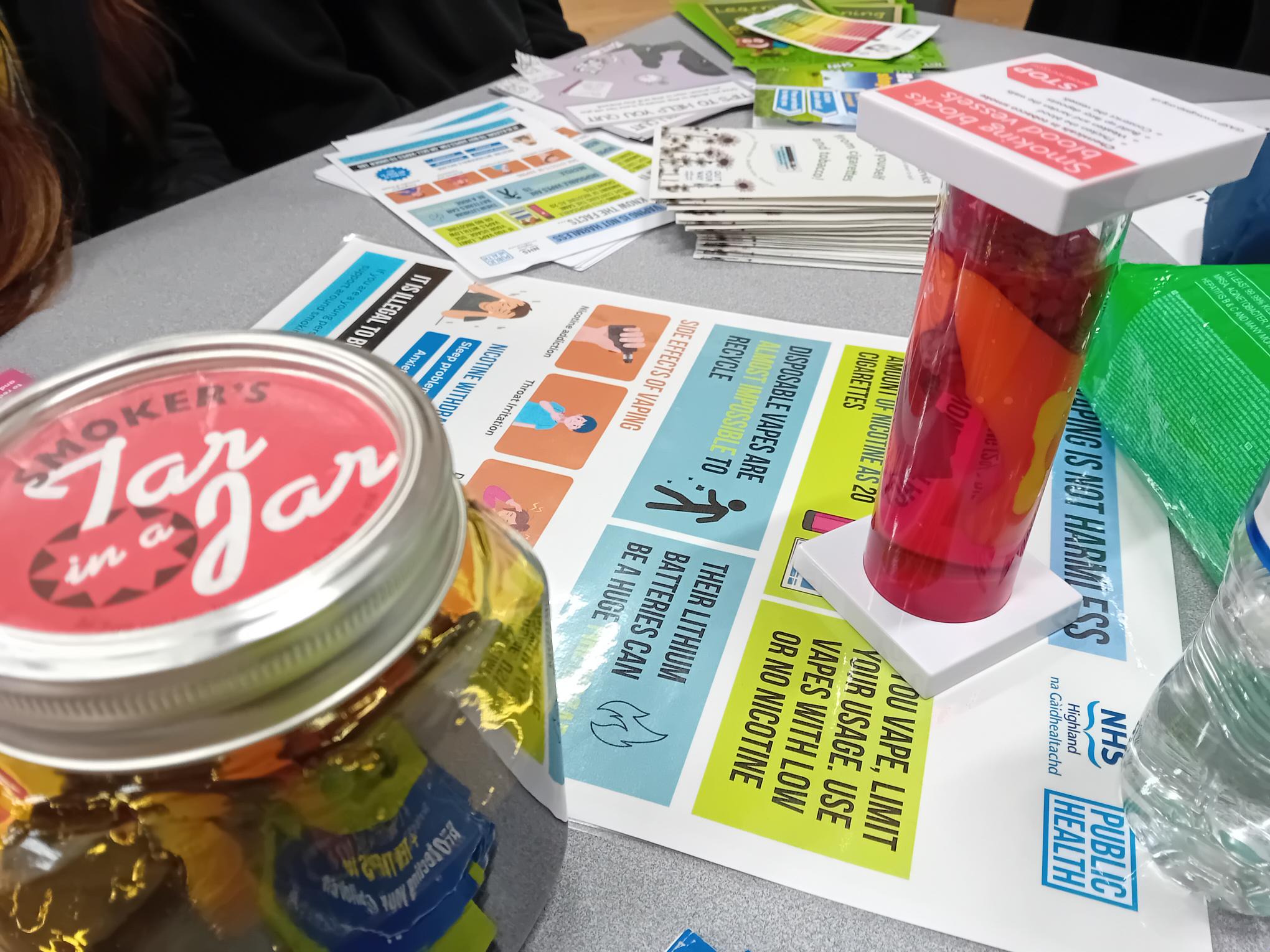
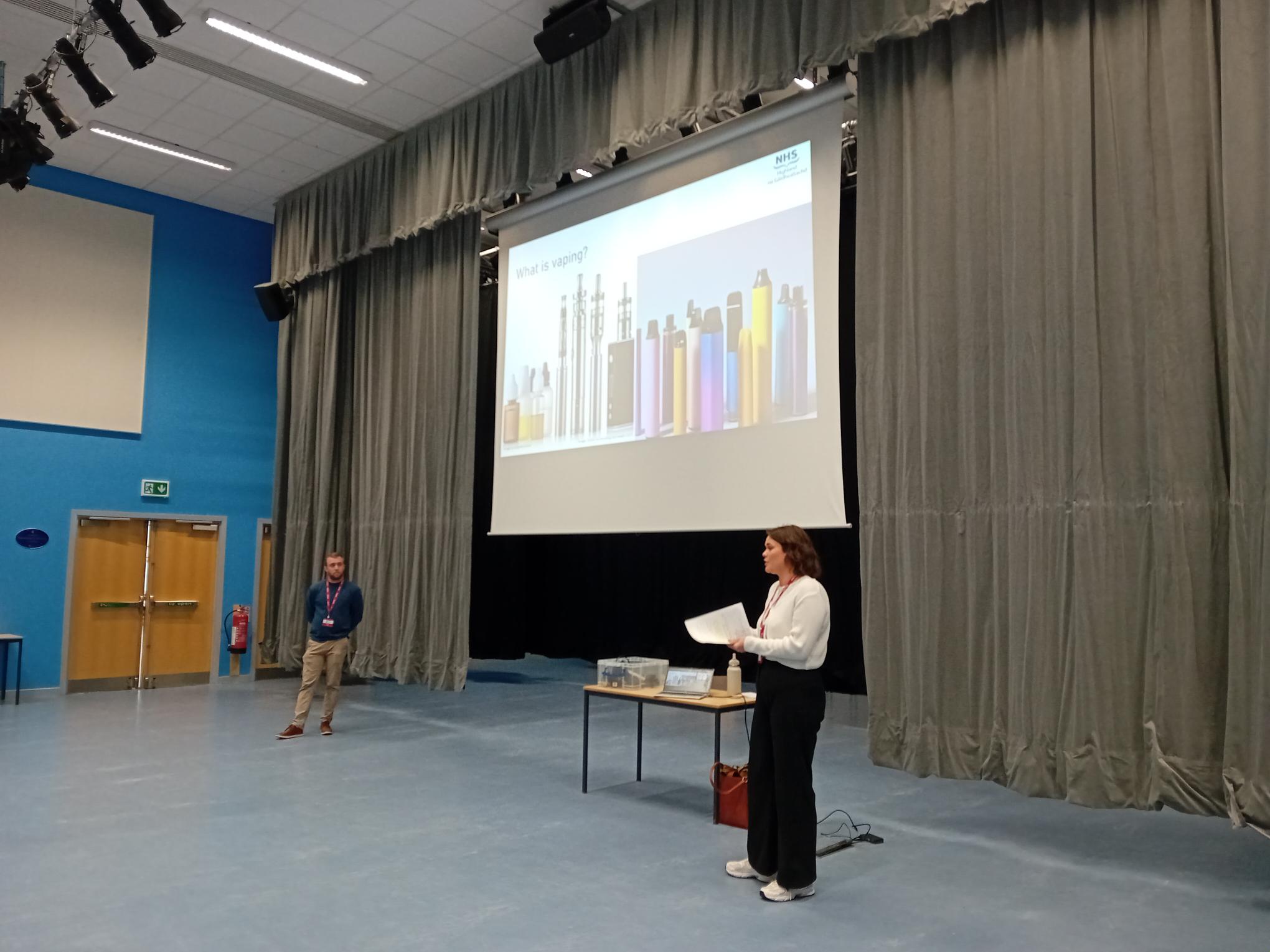
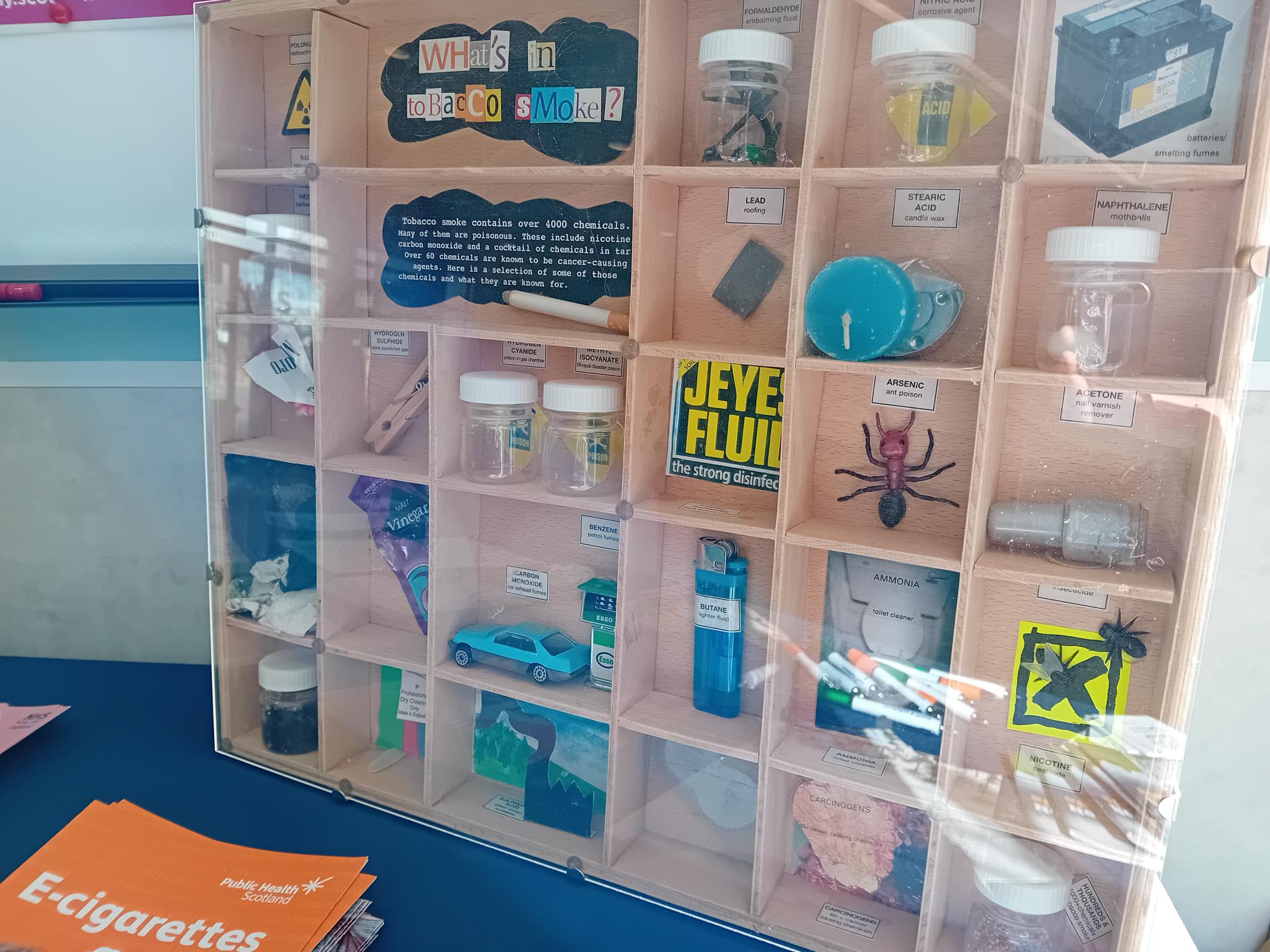
Highland Substance Awareness Toolkit
The Highland Substance Awareness Toolkit (H-SAT) is an online resource for young people, parents and carers, and professionals, providing information about tobacco, alcohol and drugs. Lesson plans are available within the professionals section.
Lesson plans have been created to support children and young people from early to senior level, mapped to the Curriculum for Excellence experiences and outcomes for health and wellbeing. They have been piloted by youth workers, teachers, and children and young people in the Highlands.
The Tobacco and the Law fact sheet is also available on the H-SAT, and was developed in conjunction with Highland Council Trading Standards.
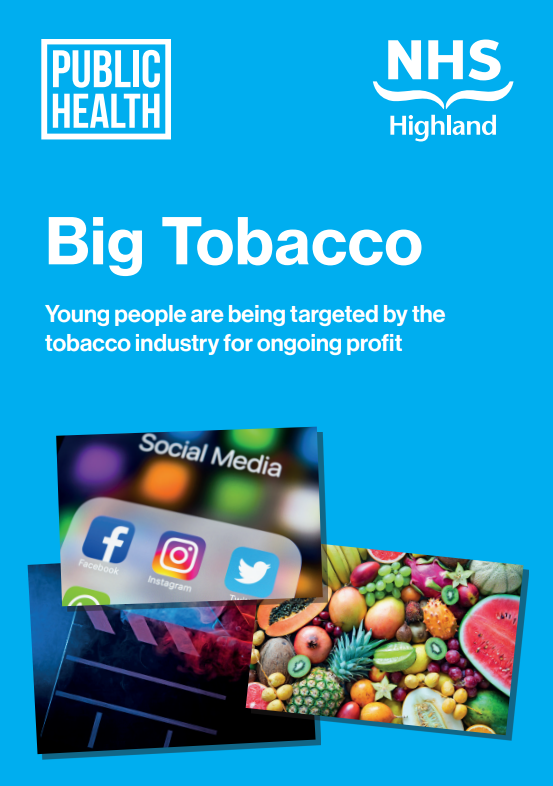
ASH Scotland resources
On the ASH Scotland e-learning and resources site there are further lesson plans about tobacco and e-cigarettes. They have also produced helpful resources to support Smoke Free School policies.
